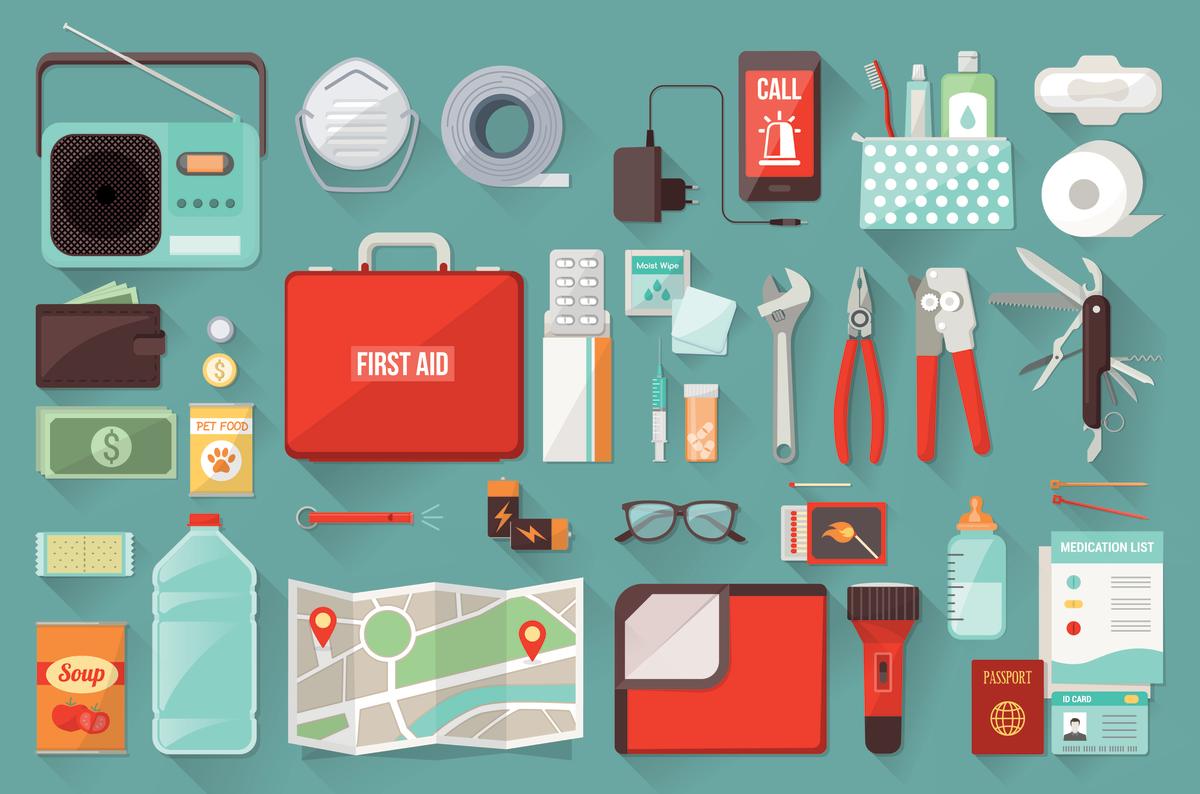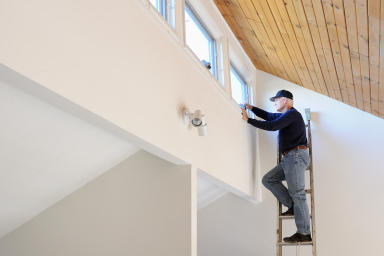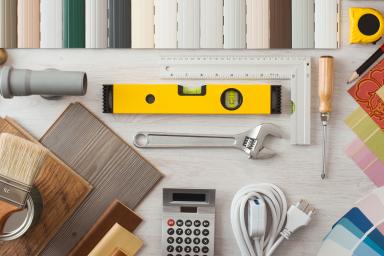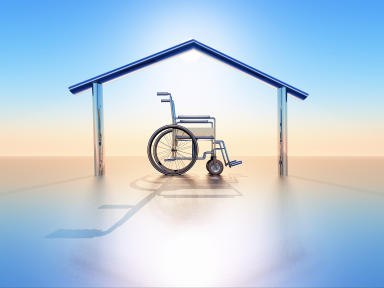The Ultimate Emergency Preparedness Checklist

Creating the ultimate emergency preparedness checklist can be a complex process, but it does not need to be a difficult one.
To prepare a successful checklist, we can consider all of the potential risks to our lives and well-being, as well as how we can avoid and overcome those risk factors.
What is an Emergency Preparedness Checklist?
An emergency preparedness checklist provides a clear summary for and reminder of all the elements that go into the planning and implementation of your family’s emergency response strategy.
When evacuating your home during a fire or dealing with a power outage, it’s not a good time to figure out where a safe place to regroup away from the home is or where you last saw the flashlight.
An emergency response checklist can help you respond to every type of emergency situation in the best way possible.
Do I Really Need To Prepare For An Emergency?
No matter who you are, the answer is yes. You may not need to make the best checklist of all time but being proactive about knowing what supplies you need and where you can go in an emergency can save lives.
Guide: Creating the Ultimate Emergency Preparedness Checklist
Creating the ultimate emergency preparedness checklist requires that all potential risk factors are considered when planning for disaster response.
Steps for Creating the Ultimate Emergency Preparedness Checklist
While creating an emergency response plan is certainly complex, it can easily be accomplished by following a few steps. Whether you are creating an emergency preparedness checklist for your home or business, the preliminary steps are similar.
Step One – Identify the goals of the checklist.
The first step in creating an actionable emergency response checklist is to identify the goals of the checklist. Asking some simple questions will help you identify the goal of the checklist.
Who needs to be included in my emergency response plan?
What kinds of emergencies are most likely to happen?
What can I do to ensure that I am ready for anything?
Step Two – Identify the scope of the checklist.
To identify the scope of your emergency preparedness checklist, create a list of all of the possible emergency situations that you would like to prepare for.
In some cases, emergency response can involve simple actionable steps and require a small go bag, while in others you may need to take a more complex approach to stay on top of your emergency response.
A solid emergency preparedness checklist includes items and considerations that cover a wide range of possible scenarios. However, it is usually best to focus on obvious risks first, and then add in contingencies for some of the more unexpected possibilities.
Some common things to consider when creating an emergency preparedness checklist and plan include:
Natural disasters like tornadoes, earthquakes, and hurricanes
Severe weather like excessive rain, hailstorms, and blizzards
Physical injuries and accidents
Fire, flooding, lightning, etc.
Useful questions to identify the scope of an emergency checklist are:
Which natural disasters are common in my area?
Is severe weather common in my area?
Which accidents are most common for people in my situation?
What should I do with my pets?
Is anyone in my home ability impaired?
Are there any unique needs for anyone included in my home?
Which emergencies am I planning for?
Should my emergency plan cover the basics or should I plan for everything?
You may also wish to expand the scope of your disaster readiness plan by considering some more specific emergencies like threat of intentional physical harm, health and wellness emergencies, medication-related emergencies, and mental health emergencies.
Step Three – Identify emergency contacts.
Understanding who to call in the event of an emergency is also a vital part of putting together any emergency response plan. The scope of your emergency preparedness checklist will help you identify which emergency responders should be included on your checklist.
Some emergency numbers, such as police, the fire department, and paramedics should always be included on every emergency response checklist.
Create a list of numbers for each of the emergencies and people you are planning for, keeping in mind who you will call in the event of a:
Fire
Medical emergency
Natural disaster
Evacuation
Car accident
You may also identify additional numbers that you should include in your emergency response plan, such as:
Family
Friends
Neighbors
Coworkers
Therapists and counselors
Hospice caretakers
Veterinarians
Childcare professionals
Step Four – Gather personal Information
An integral part of every emergency readiness plan is the inclusion of personal information of the people in your household.
Recording the personal information for everyone involved helps improve communication for everyone affected by the emergency. It is also useful to have all of your important information in one place so that you can grab it quickly if need be.
Collect the following information:
Name
Date of birth
Telephone number
Essential medical information
In many cases, maintaining duplicates of important documents can also be helpful. Examples include:
Birth certificates
Insurance information
Banking information
Medical records
Identification (for everyone included in plan)
Step Five – Create an action plan.
Another important step in creating an emergency preparedness checklist is to identify and create action plans for various emergency situations. This step is the most complex and is directly tied to the scope of the emergency preparedness plan.
In general, this means that for each situation that you have planned for, there should also be a very clear set of procedures that you will follow in the events that the emergency situation unfolds. Knowing exactly how you will respond to situations before they happen ensures that you can better respond in a crisis.
Here are some useful questions to help you develop a clear action plan for each of the elements you have included in your plan:
Which emergency responder will I call if ___ happens?
Are my emergency response kits and equipment easily accessible and clearly labelled?
Are there any unique medical considerations for anyone in my family?
Are there any accessibility considerations for my home or family members?
Do the ages of people in my home affect their emergency response capabilities?
What are my plans for ensuring everyone in the family has access to medications?
What is my evacuation route and destination if I must leave my home?
What are my transportation options?
Where will my family members meet in the event of a separation?
What is my plan for my pets?
Step Six – Decide on responsible parties.
One of the final stages of creating an emergency response checklist is to decide on who is going to be responsible for what. Emergency response checklists can be quite complex and the ways that they are carried out can change depending on the type of emergency that unfolds.
Whether creating emergency preparedness checklists for a home, business, or any other reason, all of the people who will be affected by the checklist should be aware of the checklist as well as any responsibilities they have in carrying out the duties outlined within the list.
Make sure to ask who will be responsible for:
calling emergency services?
maintaining and collecting first aid and survival kits?
maintaining and collecting go-bags and provisions?
ensuring everyone has their medications and healthcare supplies?
etc.
Step Seven – Maintain awareness of plan’s goals, scope, and implementation.
The final step in maintaining a working emergency response plan is to include in the checklist dates for revisions, education, training, and rehearsal.
Many changes can influence the effectiveness of an emergency preparedness checklist and plan. Periodically checking in with the emergency plan and related supplies can help ensure that the plan is operational. It also provides opportunities for greater awareness which leads to better implementation when needed.
Periodic questions to ask are:
Is your first aid kit up to date and complete?
Is your survival kit complete?
Is your safety equipment operational?
Is anything reaching its expiry date?
Have any of your supplies become broken or unusable?
Has anything changed in your life that requires a revision to your plan?
Step Eight – Empower yourself to respond to any emergency.
Understanding your ability to respond to emergency situations plays a big role in how you plan to deal with emergency situations.
While developing a checklist it’s important to ask yourself how much you know about some of the features that you are including in your plan, as well as how physically capable you are to carry out various tasks.
To ensure that you are ready for anything, you can do several things.
Know your risk factors
Learn First Aid
Learn how each item in the first aid kit is used
Take CPR lessons
Learn basic survival skills
Learn how each item in your survival kit is used
Ensure that you plan only includes steps that are capable of carrying out
Create a plan to navigate your home under duress
Always know who to turn to for help
Guide: Creating Emergency Preparedness Kits
Once your emergency preparedness checklist is complete, it is time to build your emergency kits. Here are some ideas of things you should consider when putting emergency response kits together.
Building a First Aid Kit
First aid kits should have a range of emergency supplies suitable for use in scenarios. It is often easier to buy a premade kit but check to see if the kit you buy has the following items.
Painkiller packets (aspirin, ibuprofen, or Tylenol)
Insect bite pads
Iodine cleansing pads
Antiseptic wipes
Triple antibiotic ointment
Triple antibiotic pads
Hand sanitizer
Surgical face masks
Nylon gloves
CPR shield
Tweezers
Scissors
Ziplocks
Clotting agent
Compress (cold)
CAT tourniquet (can be added to your kit)
Thermometer
Medical tape
Gauze rolls
Gauze pads (assorted sizes)
Bandages (assorted sizes and shapes)
Butterfly bandages
Space blankets
Eye pen light
Eye wash
First aid book
Note: Many first aid kits will include many of the things on this list. However, the numbers of each of the listed items varies considerably. Always make sure that the kit that you buy has enough supply to treat the number of people covered in your emergency preparedness checklist and plan.
Building a Survival Kit
Survival kits are essential tools when dealing with disasters. In contrast to first aid kits that focus on managing physical injury, survival kits provide the supplies needed to navigate difficult experiences.
Survival kits vary widely depending on expected use but here are some things that are commonly found in survival kits built with emergency response in mind.
Flashlight
Extra batteries
Solar charger for electronics
Clean water (Lifestraw is a good option)
Food (non-perishable, freeze-dried options are useful)
Emergency blanket
Duct tape
Plastic sheeting
Toiletries and hygiene items
Rain poncho
Multi-tool
Medical supplies
Medications (list of medications needed is also useful)
Contact numbers
Money/Cards
Document duplicates (ID, passport, license, medical insurance docs, etc.)
Field guide (survival instructions)
Crank radio
Extra glasses
Whistle
Compass
Signal flare
Keeping an Emergency Preparedness Checklist and Plan Up to Date
An outdated emergency preparedness plan and checklist can lead to many problems and confusion when disaster strikes. Having an emergency plan in place that is outdated can also offer a sense of false security that does more harm than good. Always consider how updates to your living situation will impact your current emergency response plan.
Whether you have new people living with you, a new environment, or anything in between, each new element in your life will come with details that you should add to your response plan.
While we certainly cannot control when or where emergency situations unfold, we can ensure that we are always ready for whatever life sends our way.
Relocation and Emergency Preparedness Checklists
One aspect that impacts your disaster readiness is a change of location. Take the necessary amount of time to learn how a new environment affects your emergency response plan. Which factors of the new place will change how you deal with disasters?
Here are a few of the most common modifications people make to their emergency preparedness checklist after moving:
Availability of supplies, water, and rations
Proximity to emergency services
Changes to living situation (i.e. Change the number of people included in the emergency preparedness plan, new child, caretaking a relative or loved one, etc.)
Changes to emergency numbers
Changes to contact information
Changes to meeting points
Changes to evacuation routes
Rehearsals for Emergency Situations
In addition to keeping your emergency preparedness checklist up to date, knowing how to execute your plan is crucial.
Consider the various stages in your emergency response plan. There are measures for disaster prevention, emergency preparedness, response, and recovery. Each stage contains steps, tools, and processes that may be unfamiliar to those following the plan.
The first step in rehearsing for emergency response to identify the areas that need the most work. It is common for people to need assistance in understanding first aid supplies, survival gear, and a suitable response for the emergency at hand.
Anyone who is expected to follow the emergency plan should be taught what to do and who to contact in the event of an injury, fire, natural disaster, or other emergency. They should also be taught how to use necessary supplies, first aid, and any other aspect of the plan that cannot be learned or understood under duress.
Recovering from Emergency Situations
An important aspect of dealing with emergency situations is the recovery process. Included in your emergency preparedness plan should be items and steps geared toward you getting back to a state of comfort and wellness, as soon as possible.
It is important to note that recovery will take on different forms depending on the nature and severity of the disaster that was experienced. However, while you plan for your response to common disasters, it is possible to consider a recovery plan at the same time.
Some common things to include in a disaster recovery plan are duplicates of important documents, a recovery budget, insurance on health, home, place of work, automobiles, personal belongings, and personal items for comfort. Ensuring that you have access to clean water, food, and shelter is also an essential part of beginning to heal and recover.
Final Thoughts
No matter who you are or where you live, it is always good to prepare for the unexpected. We never know when or where disaster will strike. When it does, our ability to get through those emergency situations unscathed greatly increases when we are prepared for the situation and respond accordingly.
Fortunately, getting and staying prepared for potential emergency situations is not a difficult task. By following a clearly laid plan of action, it is possible to be ready for anything without spending a lot of time worrying about whether you have missed something.
Benjamin WrightAuthor
Benjamin Wright is a dedicated parent, educator, and explorer. At Expertise, he strives to provide content that makes a difference.




